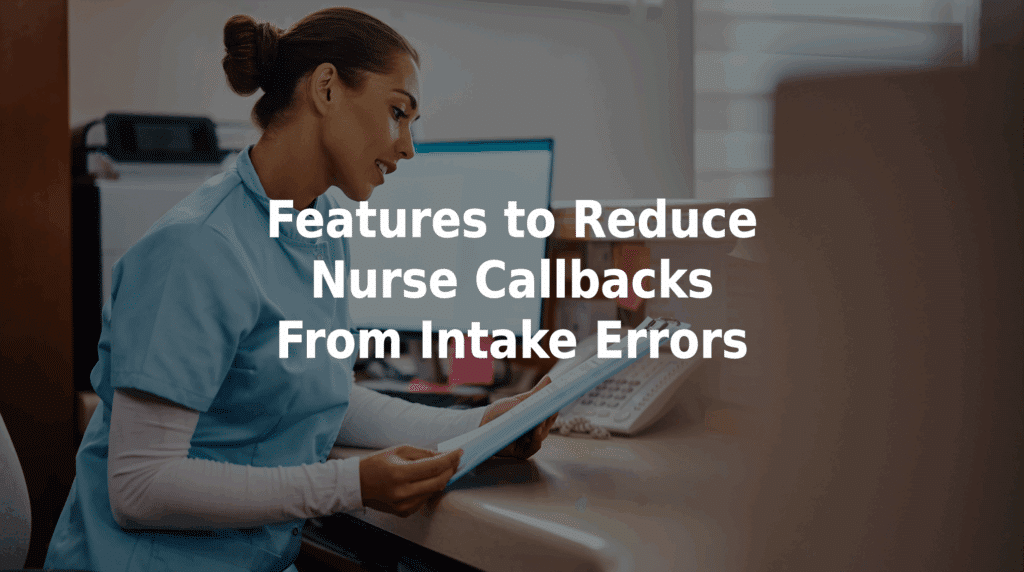Features to Reduce Nurse Callbacks From Intake Errors
Nurse managers know that when patient messages are incomplete or unclear, nurses often have no choice but to call those patients back for clarification. Not only does this delay care, but it also contributes to nurse burnout and potential adverse events. For these reasons, we think you’ll benefit from learning about features to reduce nurse callbacks from intake errors — and how automating intake can improve your clinical workflows at the same time.
Let’s talk about how to give your nurses the right information for each initial intake request.
Why Intake Errors Lead to More Work for Nurses
In many healthcare settings, intake is handled by nonclinical operators who log patient messages. But vague notes like “needs a refill” or “feeling dizzy” leave patient symptoms unclear and open to interpretation. Without proper context, nurses must follow up manually to assess their severity, gather any relevant information that was missed, or reroute messages to the appropriate team members.
These callbacks:
- Extend response times.
- Delay care.
- Interrupt nurse workflows.
- Increase stress and liability.
- Reduce patient satisfaction.
Top Features That Reduce Callbacks From Intake Issues
Structured Symptom Collection
Automated intake forms can guide patients on how to self-report their symptoms so that nurses get a complete picture with pertinent information during each request.
Built-In Clinical Logic
Automation has the ability to use nurse triage logic to identify patterns in patient responses — like chest pain plus shortness of breath — and automatically route critical symptoms for review.
Standardized Messaging Formats
Having established templates can reduce how vague or varied symptoms can be recorded.
EHR Integration
Messages that can integrate with existing internal systems will prevent missing or duplicate documentation, thereby giving providers a complete view of each patient’s medical history.
The Cost of Incomplete Intake
A 72-year-old woman called her clinic asking for a vertigo prescription refill. The operator categorized the message as nonurgent. A nurse manager happened to review the case and decided to call the patient back, where they learned that the patient was also experiencing dizziness, headache, and right arm weakness — classic signs of stroke. Emergency intervention was initiated.
With the right intake tool, these critical symptoms would have been flagged immediately without the need for a callback.
How Nurse Managers Benefit From Reducing Callbacks
Nurse managers are tasked with streamlining patient workflows and protecting their staff. If they can reduce unnecessary callbacks from their nurses, those nurses can:
- Spend more time on direct patient care.
- Triage with confidence.
- Improve turnaround on urgent needs.
- Maintain clinical documentation quality.
Automation can ensure that intake messages are accurate before they ever reach a nurse’s inbox.
Why MedMessage Automate Is Your Intake Solution
TriageLogic’s MedMessage Automate is designed to help nurses avoid unnecessary callbacks and intake errors. It offers:
- Guided self-reporting, so patients can submit their own information directly to providers.
- Built-in clinical logic to prioritize and format messages for the appropriate team members.
- Greater symptom accuracy (over 99%!) and more actionable data.
- Seamless message routing and integration.
- Saved time from fewer follow-up calls.
You’ll have faster triage, reduced mental fatigue, and better outcomes for both your patients and your nurses.
Stop the Callbacks by Using Better Intake
Give your nurses complete, accurate intake from the start. Contact us today to learn more about MedMessage Automate, and see how it can be adapted to meet your team’s needs.

